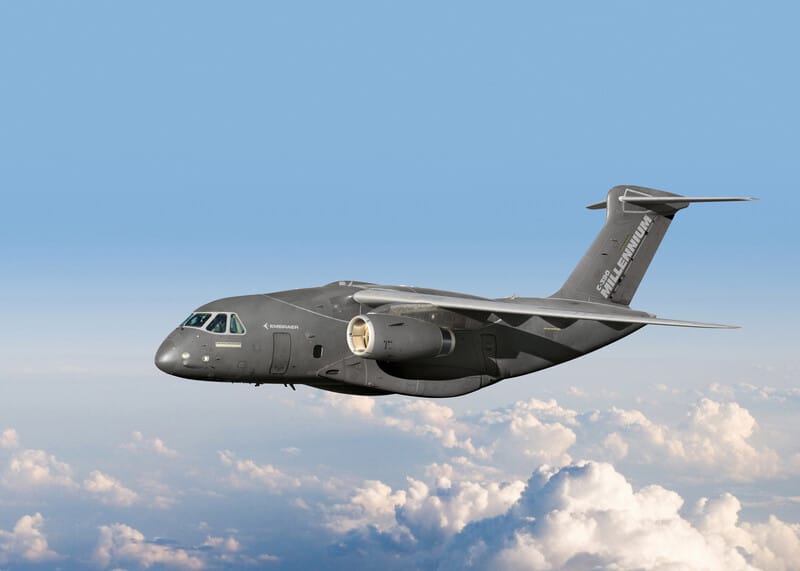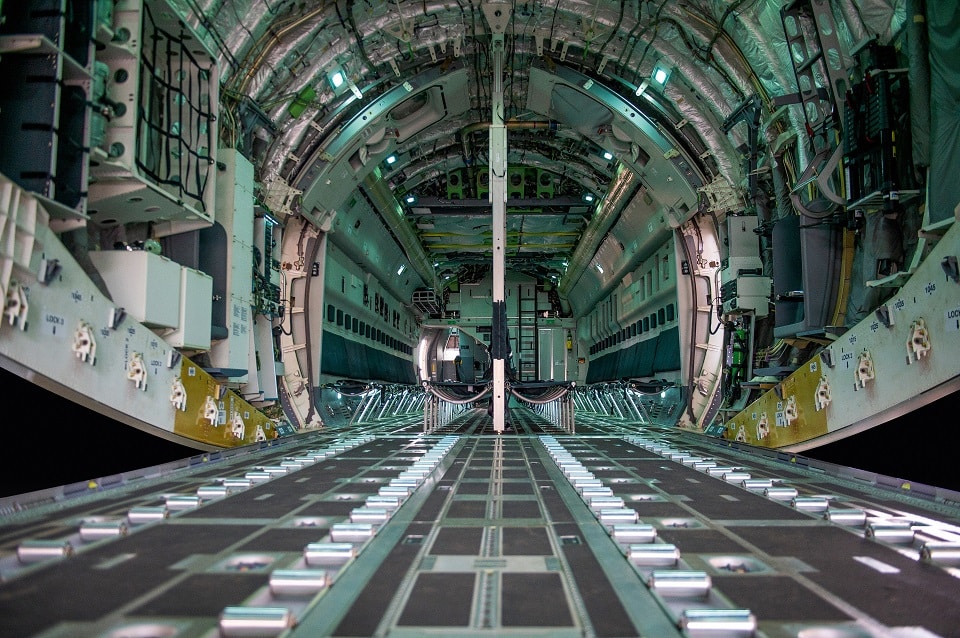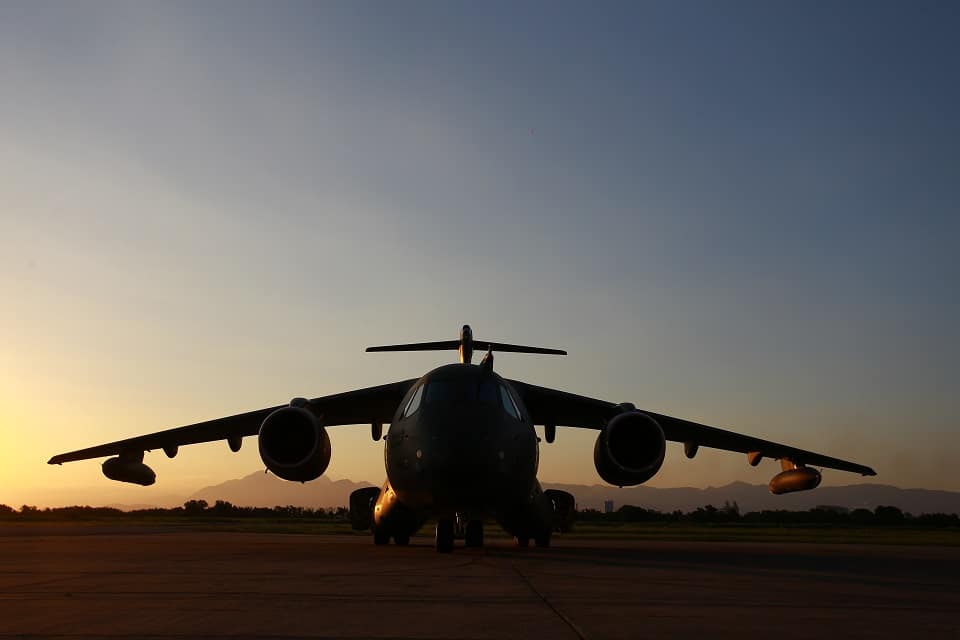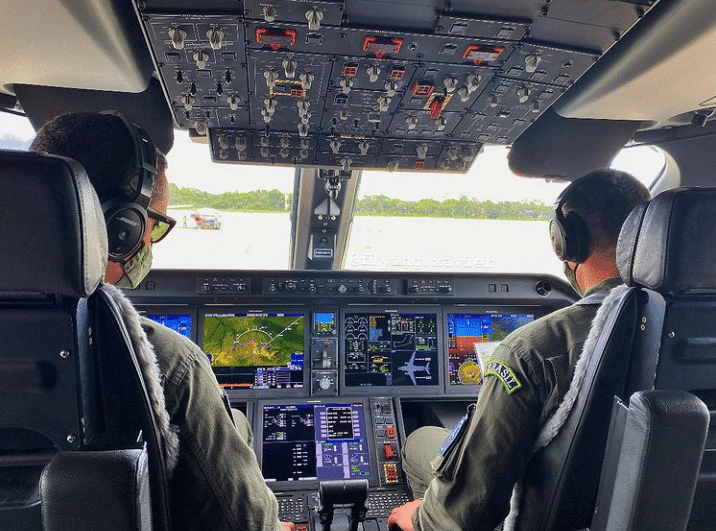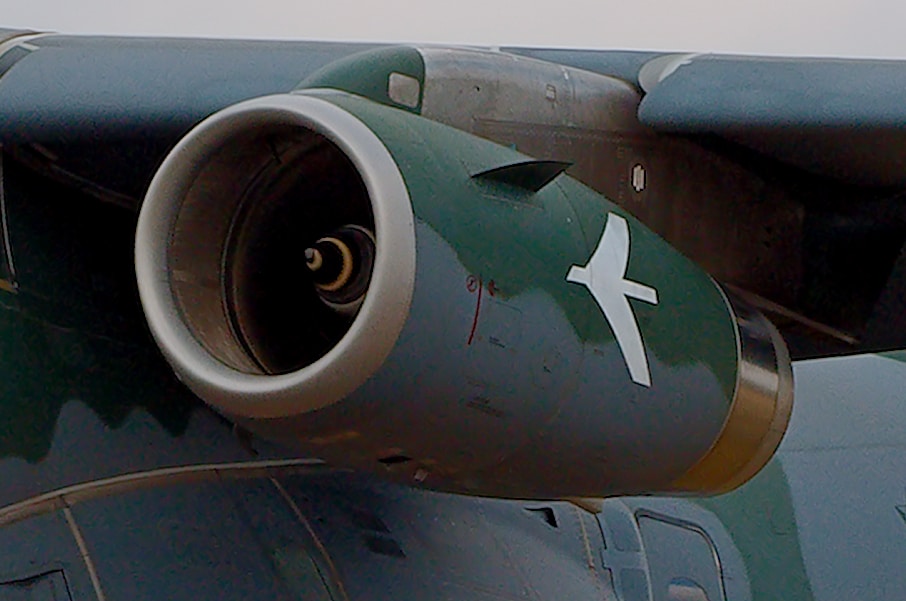Aerospace
Exclusive: Inside the C-390 Millennium demonstrator at Aero India 2023
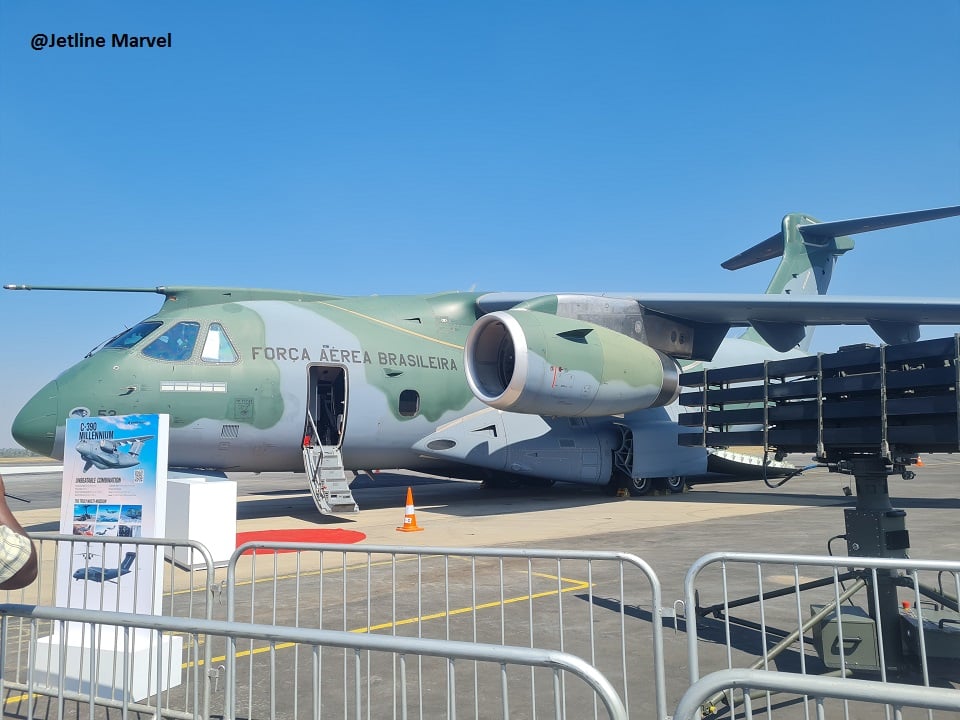
We had the chance to see a KC 390 plane at Aero India. We just looked at this aircraft and its 2023 Aero India debut. The Embraer firm, which also produces high-quality private jets and commercial airplanes, designed this aircraft. Now, the Brazilian, Portugal, and Argentina Air Forces are in charge of operating this aircraft.
We were given a tour of this aircraft by Mrs. Nilma Missir-Boissac, a member of the Embraer marketing team. We sincerely thank you for that. The technical crew also aids in our understanding of this aircraft. Let’s explore each category in detail.
There is just one variant of this aircraft that is capable of carrying up to 26 tonnes. First off, no other military cargo has the best aerodynamic structure on the nose that enables an aircraft to fly faster and with greater efficiency while also reducing drag.
An airplane is designed specifically to transport military personnel and equipment Also, there is enough space for cargo and possibly even troops on the side of the cargo compartment.
The cabins were made expressly to carry different kinds of cargo and are highly sturdy. There is also a loadmaster computer. The interior of the airplane also makes it easier for people to work simultaneously and arrange all the different types of seating for troops and cargo. It also features a water tank and a single restroom for the staff.
The aircraft has a low ground base and a steep slope at the rear cargo to conveniently load the machines or cargo inside. The cargo bed features various hooks and latches that can firmly hold the cargo and also pull up to 10 tonnes of cargo.
The VIP and other delegations are also transported in the middle cargo room, which is also easily convertible into passenger seats and a holding area.
As we entered the KC 390 cockpit, we saw that it was one of the most cutting-edge fly-by-wire systems available. Although it has many features that can be converted into a military version, it looks almost like any instrument found on a civilian aircraft.
The C-390 is the most modern next-gen military tactical transport aircraft, and its multi-mission platform offers an unbeatable combination of low operating costs and fast turnaround.
The aircraft can carry more cargo (26 tons) compared to other medium-sized military cargo aircraft and flies faster (470kts) and further on a standard crew duty day.
The C-390 Millennium can carry out a wide range of missions using the same platform, including Air-to-Air (in-flight) Refueling (AAR) for fixed & rotary wing aircraft, airborne operations, troop & cargo transportation, humanitarian missions, medical evacuation, firefighting, and search & rescue, with simple and rapid reconfiguration between the different configurations using conversion kits and state-of-the-art built-in reconfigurable cargo floor systems.
The aircraft was designed to operate on semi-prepared or damaged runways as well as in hostile environments, ranging from hot & humid to cold, dry conditions.
The C-390 has been marketed as a jet-powered alternative to the C-130 Hercules produced by Lockheed Martin. In April 2013, Brazil, Portugal, Hungary, Argentina, Chile, Colombia, and the Czech Republic signed agreements for a total of 60 C-390
The C-390 has demonstrated its capabilities, dependability, and performance throughout a range of tasks since it entered service with the Brazilian Air Force (FAB) in 2019. Five KC-390 refueling versions that belong to FAB’s fleet total more than 7,500 flight hours, and the latest statistics show a 99% mission completion rate, indicating exceptional productivity in its category. Portugal and Hungary, both NATO members, have placed orders with Embraer for the C-390 Millenium. In 2022, the Netherlands, another NATO member, decided on the C-390 Millennium.
India now maintains a variety of military cargo aircraft, including the C17, C130J, An 32, and IL-76. These aircraft can carry a variety of payloads, however, some of them are no longer being produced, such as the C17.
India is now developing its own production facility for small cargo planes with a payload capacity of up to 9 tonnes with C295 and is collaborating with TATA and Airbus, which will soon begin production of 40 planes. 16 aircraft will be delivered to the defense team in a ready state.
Since it can address urgent military needs, the Indian Defense team believes the Embraer C390 to be the most suitable aircraft. It will be the market’s youngest fleet. This aircraft performs the military and aviation functions as required by India. Even though several officials have already reached out to Embraer, a public statement has not yet been made.

Aerospace
Boeing Transfers Rocket Stage to NASA, Paving Way for Human Moon Mission

Boeing has achieved a significant milestone by providing NASA with the second core stage of the Space Launch System (SLS) rocket.
This crucial component, crafted at NASA’s Michoud Assembly Facility (MAF), is set to propel the Artemis II crew into lunar orbit, marking humanity’s return to deep space after a 50-year hiatus.
The monumental Boeing-built rocket stage, the largest element of the Artemis II mission, will embark on a journey aboard the Pegasus barge, traveling 900 miles to NASA’s Kennedy Space Center.
Comparison of two legendary aircraft B777x vs B747 aircraft:Click here
Upon arrival, it will be meticulously integrated with other essential Artemis II components, including the upper stage, solid rocket boosters, and NASA’s Orion spacecraft within the iconic Vehicle Assembly Building. This intricate integration process is a vital step toward the eagerly anticipated Artemis II launch, slated for 2025.
“Boeing-built products helped land humankind on the moon in 1969, and we’re proud to continue that legacy through the Artemis generation,” remarked Dave Dutcher, vice president and program manager for Boeing’s SLS program. “Together, with NASA and our industry partners and suppliers, we are building the world’s most capable rocket and paving the way to deep space through America’s rocket factory in New Orleans.”
NASA, Lockheed Martin Reveal X-59 Quiet Supersonic Aircraft:Click here
The delivery of Core Stage 2 marks a significant achievement in the evolution of the SLS rocket. Towering over 200 feet and powered by four RS-25 engines, this core stage, coupled with two solid-fueled booster rockets, will generate a staggering 8.8 million pounds of thrust. This immense power is crucial to launching Artemis II and future missions into the vast expanse of space.
The SLS rocket stands unparalleled in its capability to transport both crew and substantial cargo to the moon and beyond in a single launch. Its extraordinary capacity will facilitate the delivery of human-rated spacecraft, habitats, and scientific missions to destinations including the moon and Mars, ushering in a new era of space exploration.
-

 Travel1 week ago
Travel1 week agoAir India to Expand US Operations with Three New Routes After a Decade
-

 Travel2 weeks ago
Travel2 weeks agoWhy We Should Avoid These Stamps in a Passport
-

 Airlines1 month ago
Airlines1 month agoInvestigations Reveal Fake Chinese Titanium in Boeing and Airbus Jets
-

 Tech4 weeks ago
Tech4 weeks agoChina’s CATL Plans 1,800-Mile Electric Plane Launch by 2027
-

 Airport3 days ago
Airport3 days agoTop 10 Largest Airports in the World by Size
-

 Aerospace4 weeks ago
Aerospace4 weeks agoChina’s Fighter Jets Turn Wings into Autonomous Drones
-

 Airlines4 days ago
Airlines4 days agoAir India Rolls Out A350s for Delhi-New York JFK and Newark Routes
-

 Defence3 weeks ago
Defence3 weeks agoBoeing Enhances Chinook with New Engines and Block II Upgrades at $96 Million

